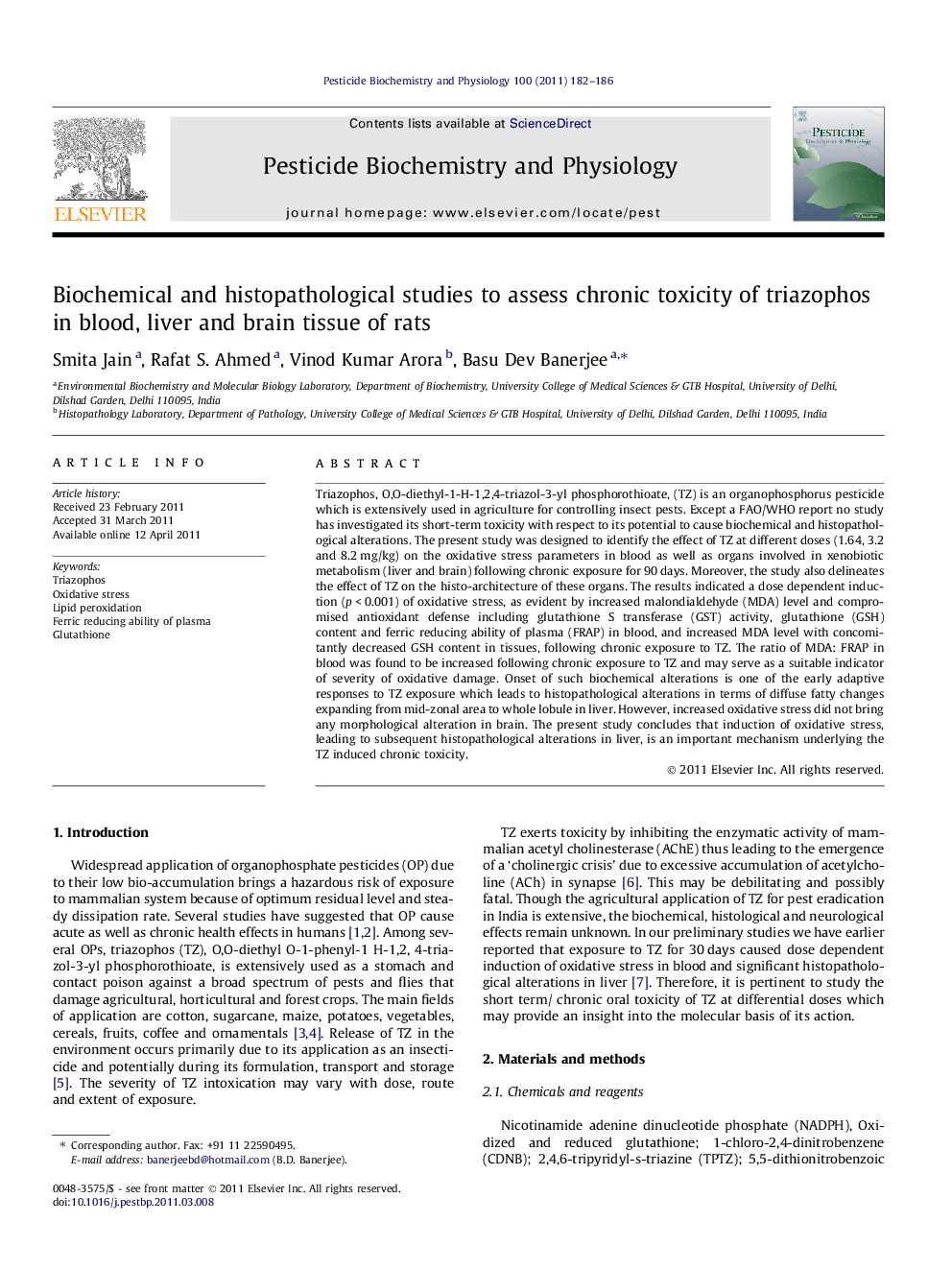| کد مقاله | کد نشریه | سال انتشار | مقاله انگلیسی | نسخه تمام متن |
|---|---|---|---|---|
| 2009547 | 1066672 | 2011 | 5 صفحه PDF | دانلود رایگان |

Triazophos, O,O-diethyl-1-H-1,2,4-triazol-3-yl phosphorothioate, (TZ) is an organophosphorus pesticide which is extensively used in agriculture for controlling insect pests. Except a FAO/WHO report no study has investigated its short-term toxicity with respect to its potential to cause biochemical and histopathological alterations. The present study was designed to identify the effect of TZ at different doses (1.64, 3.2 and 8.2 mg/kg) on the oxidative stress parameters in blood as well as organs involved in xenobiotic metabolism (liver and brain) following chronic exposure for 90 days. Moreover, the study also delineates the effect of TZ on the histo-architecture of these organs. The results indicated a dose dependent induction (p < 0.001) of oxidative stress, as evident by increased malondialdehyde (MDA) level and compromised antioxidant defense including glutathione S transferase (GST) activity, glutathione (GSH) content and ferric reducing ability of plasma (FRAP) in blood, and increased MDA level with concomitantly decreased GSH content in tissues, following chronic exposure to TZ. The ratio of MDA: FRAP in blood was found to be increased following chronic exposure to TZ and may serve as a suitable indicator of severity of oxidative damage. Onset of such biochemical alterations is one of the early adaptive responses to TZ exposure which leads to histopathological alterations in terms of diffuse fatty changes expanding from mid-zonal area to whole lobule in liver. However, increased oxidative stress did not bring any morphological alteration in brain. The present study concludes that induction of oxidative stress, leading to subsequent histopathological alterations in liver, is an important mechanism underlying the TZ induced chronic toxicity.
Figure optionsDownload as PowerPoint slideHighlights
► Chronic exposure to TZ induced oxidative stress.
► TZ imparts short term toxicity via increased oxidative stress in rats.
► Chronic exposure to TZ causes histopathological alterations in liver.
Journal: Pesticide Biochemistry and Physiology - Volume 100, Issue 2, June 2011, Pages 182–186